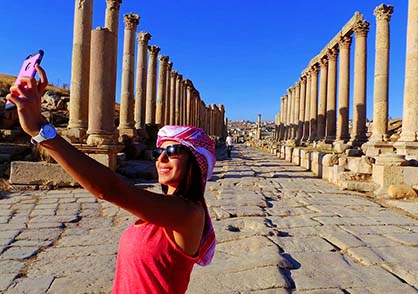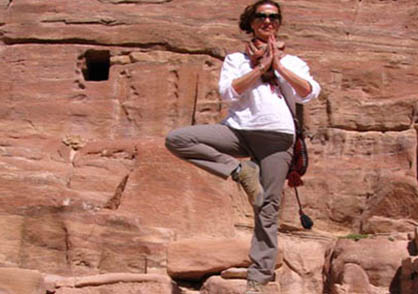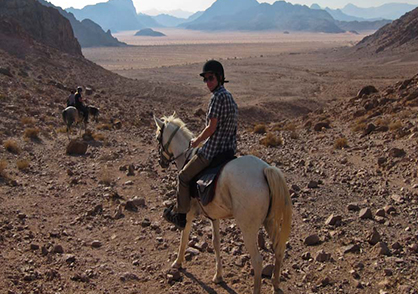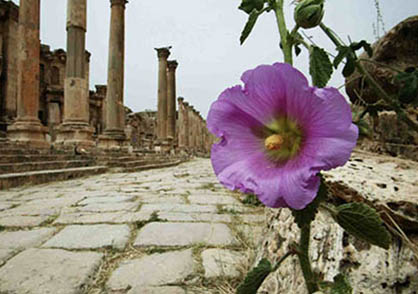A land rich in natural wonders and sites so ancient that, by comparison, the Crusader forts guarding the old trade routes are considered recent additions. Moses is said to have led his people through the parched Jordanian deserts. Alexander the Great paved the way for Hellenistic cities and culture, while the Natabeans carved grandiose buildings, temples, and tombs out of the red Petra sandstone. Later still, Jordan became an important trading center of the Roman Empire and a lavish backdrop for some of history’s most enthralling tales. Remarkably, the landscape has changed little in the last 2,000 years.
The seven hills of Amman are an enchanting mixture of ancient and modern. More cosmopolitan than most other Middle Eastern capitals, Amman’s cafés, restaurants, museums, and shops sit cheek-by-jowl with the remains of civilizations long past. The most impressive relic is the restored Roman Theatre, while the ancient Citadel still towers above the city. Outside the capital, the spectacular, well-preserved Greco-Roman remains at Jerash await. It is chock-a-block with temples, forums, and columns; some have even compared it to Pompeii. Further south, you’ll find Biblical sights like Mt. Nebo, associated with the last days of Moses and famous for its dazzling views across the Jordan Valley and the Dead Sea. Along the Kings Highway, the striking silhouettes of the fortified towns and castles recall the bloodthirsty days of the Crusades. Yet these national treasures all serve as a precursor to the undisputed jewel in Jordan’s tourism crown: the lost city of Petra. Recognized as a world wonder, this vast, unique city, carved into the sheer rock, is an awe-inspiring experience.













